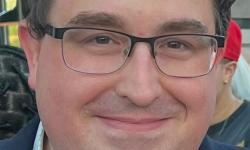Opinion | Stacking best practices to help Michiganders safely return to work

Over the last several days, Gov. Gretchen Whitmer has announced that some businesses, like plant nurseries and bicycle repair shops, can reopen, and residential and commercial construction will resume on May 7. Whether or not you work in one of those industries, we’re all eager to get back to work. How do we do so safely?
Until a COVID-19 vaccine is developed and widely available, this virus and the threat of future widespread transmission will be with us. While we cannot stop the outbreak right now, we can manage it. The way we have come together as a state to flatten the curve and alleviate the burden on health care providers is a testament to our ability to work together to manage this outbreak.
However, we know that sweeping social distancing measures have severe economic impacts. While preventing the spread of the virus is good for public health, so is going back to work and creating economic security for Michiganders. The health of our communities flourishes when people have financial resources to pay for basic needs, access to health insurance, and increased connections with family and friends.
As an epidemiologist and biostatistician at the University of Michigan School of Public Health, we are working aggressively with our colleagues to use science to guide how individuals return to work as safely and quickly as possible.
How do we move forward in a way that safeguards the public’s health?
Our research tells us that stacking best practices—with several layers of safeguards to reduce the spread of COVID-19 and lower the risk of another spike in cases and deaths—is necessary to manage this outbreak while re-engaging our economy.
What do we mean by stacked best practices?
Think about driving your car and the many layers of protections that keep you safe. The first layer of protection is personal controls, or things we do at an individual level to protect ourselves and those around us. When we’re driving, these include things like wearing a seatbelt, using the turn signal, and not texting while driving. For COVID-19, personal controls include many of the things we have already begun doing—wearing a mask in public, washing your hands frequently, staying home if you are experiencing symptoms, keeping six feet of distance between you and others when out in public, and maintaining a range of other positive health behaviors (e.g., nutrition, sleep, and exercise).
The next layer of protection is administrative controls. These are processes and policies that help keep colleagues, customers and others safe. When driving a car, these are the traffic laws that we all must obey. In response to COVID-19, these include staggering shifts to reduce the number of people in a given area, temperature screenings, enhanced cleaning protocols and social distancing.
Next, there are engineering controls, which are physical structures put in place to distance individuals from hazards. On the road, these are guardrails and lane markings. For COVID-19, they include rearranged workstations to increase distance between coworkers and plexiglass shields to minimize physical contact between cashiers and customers.
Finally, there are public health controls, which include ways in which public health professionals closely monitor the outbreak for early signs of another spike. Just like we monitor how many car crashes there are each year and evaluate the need for more safety measures, public health professionals will monitor if and how COVID-19 continues to spread as we start going back to work and school. That way, we can be responsive if we see a sudden increase in cases in certain parts of the state. If that happens, we may have to return temporarily to more stringent personal, administrative and engineering controls.
Alone, each of these tactics can help reduce the spread of coronavirus, but—when used together—stacking best practices will be much more effective.
The uncertainty of this situation is challenging in many ways. But we have to work together to continue to manage this outbreak. Just like when we’re on the road, safety requires shared responsibility.
While we are not all going back to work and school tomorrow, now is the time to begin preparing. Educate yourself on the things you can do at the individual level to help prevent the spread of this disease. Employers, develop plans for your facilities and worker training that ensures the safety of your workforce and your customers.
We, as public health professionals, commit to continuing to monitor this situation and watch for signs of a resurgence. We can manage this outbreak, but we need to do it together.
See what new members are saying about why they donated to Bridge Michigan:
- “In order for this information to be accurate and unbiased it must be underwritten by its readers, not by special interests.” - Larry S.
- “Not many other media sources report on the topics Bridge does.” - Susan B.
- “Your journalism is outstanding and rare these days.” - Mark S.
If you want to ensure the future of nonpartisan, nonprofit Michigan journalism, please become a member today. You, too, will be asked why you donated and maybe we'll feature your quote next time!




